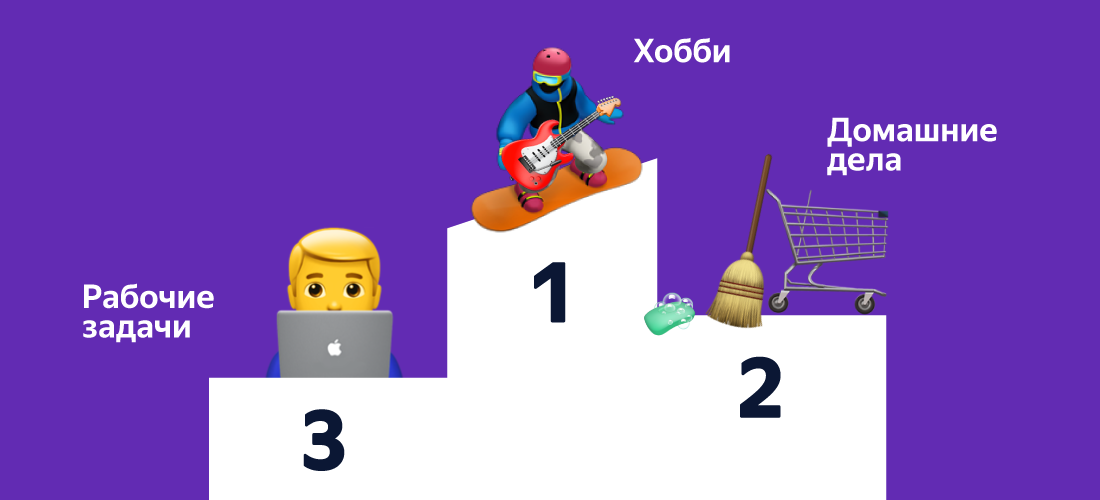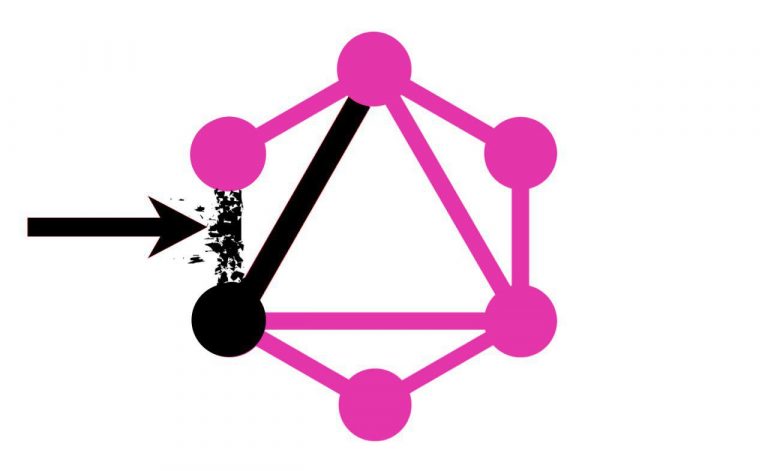When the principle “to hell with everything, take it and do it!” not working: procrastinator notes
“Set aside today what you postponed yesterday for today”
For this article, we conducted a short survey among our colleagues and asked how often they postpone something for later and what are these tasks. The results impressed me – in the first 15 minutes we received more than 150 answers with a detailed listing of cases postponed for several weeks or even months. What is this talking about? Firstly, despite the long-standing discussion of the issue, the problem still finds a stormy response, and secondly, it seems that there are no non-procrastinators – everyone is postponing anything (Tim Urban speaks very brightly about this in his sensational TED talk).
The tasks that our colleagues put off are varied, but if you look closely, they have a lot in common. In most cases, the principle is this: the more emotionally unpleasant the task, the more likely it will be postponed. We can say that there are several signs that significantly increase the likelihood of procrastination. As a rule, such tasks:
- boring (for example, cleaning an apartment or work routine);
- complex, unstructured (fixing a chandelier or creating a mobile application – in both cases the task was new for the respondent, and he did not know how to approach it);
- do not have value for you as a person (for example, to make out unnecessary things);
- during their execution, a feeling of futility of efforts may arise (the same analysis of the wardrobe, when things do not become smaller and this chaos seems endless);
- do not bring pleasure in the process of execution.
The more these signs the task has and the more pronounced they are, the less attractive the task itself will be for us, and we are more likely to postpone it for later. That is why, at the very last moment, instead of completing the task, I want to turn on the series on Amediateka, where there are not so many negative triggers.
On the other hand, the hobby tasks included “going to the gym”, “signing up for a dance training that I had long dreamed of,” and even “soldering something” among the leaders in putting off. It seems that these tasks do not fit the criteria described above. Why then do we put them off? In short – the answer is in bestowal, more precisely, in the period when we get the bestowal (read “pleasure”) from doing this. It is clear that the pleasure of drinking coffee or a cookie eaten will come faster than the pleasure of your body after regular exercise, so the choice is obvious to the brain.

What tasks are most often postponed (according to a survey among colleagues)
What happens in the brain?
Let’s look into this in more detail and recall the processes taking place in our brain.
We can say that when you procrastinate and decide: watch another episode of Game of Thrones or prepare for a quarterly report or sign up for a new Python course, a full internal battle takes place in the brain – tug of war between the limbic system and the prefrontal cortex .
The limbic system is an ancient “emotional” part of the brain, which is also present in developed animals. It pushes us to instinctive actions, inclines us to give in to emotions and temptations like cookies on the Monday when you decided to go on a diet. The prefrontal cortex is the logical division of our brain. Only people have it, it is responsible for logic, reason and allows you to keep long-term goals in focus.
Each decision we make is the result of the victory of either the limbic system or the prefrontal cortex. If the first takes over – we do not resist, postpone the preparation of a complex report, go to drink coffee with a colleague and get short-term pleasure.
But the prefrontal cortex often manages to keep the victory. As a result, we still end up in the gym after work and keep fit, overpower procrastination and finish the article or read about productivity. This part of the brain is struggling for us to achieve long-term goals, not just those that bring pleasure in the short term.
Of course, this interaction scheme is greatly simplified. In reality, all parts of the brain actively and difficultly interact with each other, and it is thanks to their “cooperation” that we realize our ideas, come up with new projects and create lasting relationships. But productivity is mainly associated with the formation of a strong prefrontal cortex, which, if necessary, can suppress the impulsive desire to check your mail or Telegram again, instead directing our attention to high-return cases. At the same time, a strong prefrontal cortex is not so simple, especially taking into account the fact that the limbic system has developed over millions of years, and the prefrontal cortex is relatively young – it exists only for thousands of years. So it is not surprising that we are so inclined to put off important matters with a distant return for later.

How to tip the scales in the right direction? How to help yourself and your brain get down to business with long-term impact (read “finally disassemble all the trash at home after repair”) if the body asks for pleasure right now (read “see the new series of The morning show”)? Here is what helped me.
Step 0. Recognize that non-procrastinators do not exist, and don’t reproach yourself for that. In most cases, the brain almost automatically puts off an important matter for later for the sake of quick pleasure. When you realize this phenomenon, it’s easier for you to manage it.
Step 1. Realize that you are procrastinating. If I postpone the task more than 4 times in a row (and it can be anything: writing an article or going to the gym), then I seem to be procrastinating. It makes sense to take a closer look at this task and find out the reasons for the delay – are there really more urgent and important things and putting it off for later is my conscious decision, or does the task just seem to me boring, difficult or not valuable.
Step 2. Depending on this trigger, choose the method of working with the task. For instance:
![]()
If the task seems complicated and incomprehensible, it is often enough to focus and describe a simple first step. This rule helps me: start the task description with an imperfective verb, describe the first result. That is, to formulate the task so that when you read it immediately it becomes clear what needs to be done (and this is exactly what our brain needs in the face of uncertainty!). For example, the task of “writing an article about working with procrastination for Habr” is super-voluminous and complex, so I constantly wanted to postpone it. The first step toward the goal for me was: “Read 5 articles on procrastination.” The task is quite simple and clear, it is easier to do than to postpone, but at the same time it propelled me toward the goal.
![]()
If the task seems boring or unimportant, perhaps it is not only the result (you may well be aware of its importance), but in the process itself. Change it. For example, when I began to deal with the constant desire to postpone the task of writing an article for later, I realized that the process of execution itself did not cause me pleasure. After reading the articles and sorting out the information from my trainings, I still sat in front of a blank screen and preferred to search for a gift for Secret Santa. Then we came up with a new format of work – I just told the recorder all my ideas for productivity. This is professional – I like to share knowledge and tell stories. As if the structure of the article took shape by itself, there were examples and tricks. It remains just to fix them on paper.
Step 3. Get to know yourself better. This item is a little in line with the previous one. Allow yourself five minutes and think about what activities bring you pleasure, which is really important and valuable for you. Then the implementation option is easy. For example, you can go to your favorite cafe and, imagining yourself Hemingway, write an article there, over a cup of exotic coffee, or imagine all the benefits, fame and honor that you get for completing a task. As a result, I am adding this article while sitting in a cozy cafe with a view of the mountains;)
Step 4. Ask for support. A friend of mine could not lose weight. He promised himself various rewards for the week on proper nutrition, bought gym memberships, but nothing helped. Then he realized that it was important for him to promise something else, because then it would be more difficult not to keep his word. So he hired a nutritionist. In addition, in addition to fulfilling promises, the nutritionist monitored the progress and, on occasion, asked: “How are things going?” In the case of my article, it was the same. My editor mentor regularly asked me: “How is your article?” – and this responsibility to another person also helped me move forward.
Step 5. Focusing “one time slot – one task”. This is the basis of the Pomodoro principle, when for 20 minutes you, without being distracted by anything, work on one project. Then, at the beep of the timer, you must stop, take a five-minute break, and then get back to work. The only condition is that it’s important that you know exactly what task you will be working on in one slot or another and don’t waste time choosing (how to formulate tasks, see point 2).
You can go further and break your whole day into such slots, for example:
- From 8 to 10 I go in for sports / learn a foreign language / read a book / watch a series / read social networks (and do not get distracted by anything else);
- from 11 to 17 I solve work tasks (and I’m not distracted by anything else);
- From 19 to late in the evening I spend time with my family (and no longer get distracted by anything).
- That is, to consciously allocate time for yourself to complete a particular business. The main thing is to know exactly what tasks you will solve today, so as not to waste time thinking.
Why does it work? It seems that often procrastination is associated with the coincidence of two factors: the desire to do something really good (write a cool article, choose the most suitable, not the first Python course you come across or fulfill the assignment of the leader better than the others) and a lot of personal and work tasks. The number of cases puts pressure on us, creates the feeling of “I’m on fire”, and the desire to complete a task at a high level makes us realize that it takes a lot of time to reach a given level. Therefore, it is easier to take on fast tasks – so at least their number will decrease and the pleasure of a quick result will be added. Meanwhile, other, perhaps important, tasks are being put off and put off for later. As soon as you write out on paper all the tasks that you have, thereby unload them from your head, and then select from them those that you will be doing at a certain time, this panic will pass. Performing tasks on time, you will see progress and get a resource for moving forward.
The number 3 works well for me – for every day I have 3 tasks that I must fulfill. Of course, the real to-do list is longer, in addition there are tasks that can be added during the day, but these 3 are mandatory for execution in the time slot that I determined (for example, from 11 to 17).
Step 6. Regular, good rest. Our mental resources are limited, and sometimes we want to postpone the task simply because these resources are exhausted. In general, sometimes it’s important to just get enough sleep and get back to work with renewed vigor. Take a closer look at yourself – maybe now you are just overloaded, and a dream or a long walk will help you recover.
Eventually
Thanks to these tricks, the article was ready in a couple of weeks. Now, when I am writing the last paragraph, I feel joy from having finally shared with you techniques that may be useful (if you remember, this is just the distant pleasure that the brain required :)). In general, if you, like me, are concerned about the problem of constant procrastination, then think about what and why you are procrastinating. Perhaps this is due to lack of rest, lack of motivation or an incomprehensible process, but only having realized this, you can find a way out and get a buzz from completing the task.
I hope that the article was worth the task that you set aside for reading it.
Please write in the comments those cases that you completed when you figured out the reasons for your procrastination. Waiting for another batch of inspiration!





